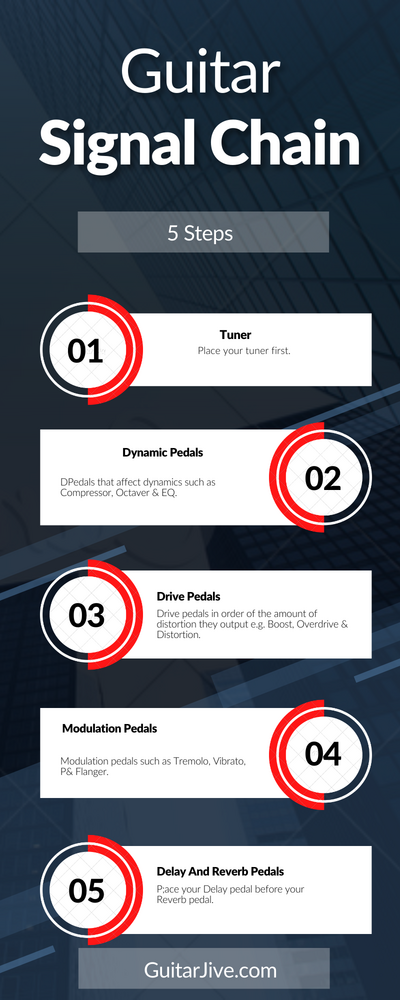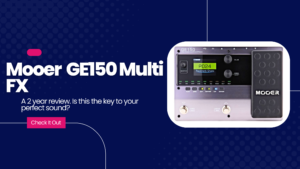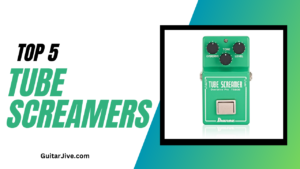Introduction
Do you know in what order guitar effects pedals need to go in the signal chain? If not, there’s no need to be alarmed. That just means you’re in the same boat as a lot of guitarists out there. Thankfully, it’s not that hard to learn, and with a bit of practice and persistence, you’ll have your pedalboard signal chain down in no time.

Why Signal Chain Matters
- Certain pedals work better with clean sounds
- Noise is kept to a minimum
- Modulation can be applied to the whole signal
5-Step Effects Pedal Order
Okay so here is the plan that I use, it falls into 5 groups of pedals:
- Tuner. This is fairly straightforward, you want your tuner at the beginning of the chain. The tuner needs a clean signal straight from your guitar to be able to work correctly. A tuner is an essential part of any pedalboard as no one wants to hear you play out of tune. Having one on your pedalboard allows you to quickly check your tuning in between songs, during live situations.
- Dynamic Pedals. The next group of pedals is your dynamic pedals. These include effects that change your guitar tone such as Compressors and Octaves. These tend to work better with a clean signal, so they go near the start of the chain. In this group, you can also put your Volume pedal and your Wah pedal which I tend to put at the front of this group.
- Drive Pedals. These effects pedals come in third, near the start of your chain. Drive pedals amplify the sound, which means they will also amplify any noise that is present, so it’s a good idea to put them early on before a lot of pedals that create noise. I put these in the order of the amount of “distortion” that they produce, e.g Overdrive, Distortion then Fuzz. This then allows you to stack the pedals to get a really gnarly sound.
- Modulation Pedals. These are effects that modify your sound by incorporating some kind of feedback. They can produce noise and introduce harmonics so you want these after your drive pedals. They include effects such as; Chorus, Tremolo, Phaser, and Flanger. Again put these in the order of how much they modify the sound, I recommend putting the Flanger last.
- Delays and Reverb Pedals. The last group is the effects that create ambiance. It’s a good idea to put the Delay before the Reverb, this will produce the most organic ambient sounds. If you’ve got a looper pedal, this goes in this group as well. I tend to put it at the start of this group so that I avoid a double reverb, but many place it last.
If you find you end up with a lot of unwanted noise in your sound, then try adding a Noise Supressor in between steps 3 & 4.

Effects Loop

If your guitar amplifier has an “Effects Loop” you can alter your signal chain by splitting your pedal board. The typical way to do this is that you put the output of the chain after your drive pedals into the input of your amplifier, leaving the rest of your pedals with no input. You then use the “send” jack to the input of the rest of your chain which would be your modulation pedals. The output of the chain after your Reverb goes into the “Return” jack.
An effects loop bypasses your amplifier’s pre-amp, which is the amplification stage where “drive” is applied from the amplifier. It’s a good idea to bypass this so that your not again applying overdrive to a modulated signal and your reverb which creates noise and leaves you with a kind of “muddy” sound. Instead, this signal goes straight into the power amp stage of your amplifier. The downside here is that your setup gets a little more complicated and you have 2 more jack leads to purchase. The positives though outweigh the negatives and it’s worth experimenting with to see for yourself.
Experiment and Break The Rules
As I’ve said the steps listed are just what I tend to do and what is generally regarded as best practice. However, music is all a matter of taste and if you’re after a particular sound, experiment with changing the order and see what effect it has. You never know you might end up with that “new” sound that everybody is continually searching for.
Conclusion
In the end, the order in which you place your effects pedals is entirely up to you. Whether it’s your first pedalboard or your tenth, there’s a lot of room for experimentation. Remember that keeping all of your effects pedals in one signal chain will suffice, but you can optimize it by using the effects loop. If you found this useful post a comment below and follow on Social Media.




Pingback: What Is a Multi-Effects Pedal? you need to try one! | Guitar Jive